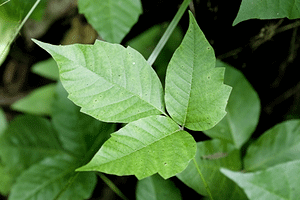How To Recognize & Avoid Poison Ivy Plants In Florida
 If you come into direct or indirect contact with poison ivy you will likely develop an itchy, red rash with bumps or blisters as the result of an allergic reaction. Poison ivy plants secrete an oil or resin called urushiol, which humans are highly allergic to.
If you come into direct or indirect contact with poison ivy you will likely develop an itchy, red rash with bumps or blisters as the result of an allergic reaction. Poison ivy plants secrete an oil or resin called urushiol, which humans are highly allergic to.
It may take as long as one to two weeks after contact to notice a rash, at which point people often don’t know how they got it. Poison ivy remains the most common cause of skin rashes developed by children and adults after spending time outside.
Poison oak and poison sumac produce similarly discomforting results upon contact. You are not very likely to encounter poison oak or poison sumac in Florida’s southern or coastal communities. They are more common in north central Florida and northwest Florida. Poison ivy, on the other hand, is very common along the coast and other parts of South Florida. In fact, poison ivy is found all throughout the US with the exception of Alaska, Hawaii and the Southwest.
It’s important that you are able to recognize poison ivy plants or else you’re sure to unintentionally come into contact with it at some point, especially if you enjoy spending time outside in nature.
What does poison ivy look like?
Poison ivy plants are identifiable by three shiny green leaves and a red stem. The leaves are often completely smooth around the edges but they have some soft serrated edges. Poison ivy may also have berries growing on it; clearly you don’t want to eat these!
The Virginia creeper looks very similar to poison ivy, and the two often grow right beside or even intertwined with one another. Yet, the Virginia creeper generally has five leaflets on each stem as opposed to three. The leaves have more serrated edges, while poison ivy tends to have smoother edges.
Where does poison ivy grow?
Poison ivy plants are most commonly found growing in vines, although they can also appear as a big bush scattered on the ground or growing out or up from a tree. Poison ivy is often found alongside riverbanks, but it is very adaptable and can grow just about anywhere, including barren parking lots and your backyard fence.
Does poison ivy always cause a rash?
Simply being around poison ivy makes it very easy to develop a rash. Touching the plant is the easiest way to develop an allergic reaction. If you walk on it, beware that the sap will stick to your shoes and infect you at a later time when your skin makes contact with your shoes. The same thing will happen if your clothes brush up against the sap. Even dead leaves can remain infected for up to FIVE years.
How do you know if you come into contact with poison ivy?
Symptoms of poison ivy include:
-Extremely itchy skin
-A red rash that may appear in patches or streaks wherever the skin made contact with the plant or sap.
-Raised bumps that may turn into blisters.
What should you do if you come into contact with poison ivy?
-The first thing you need to do is thoroughly wash the affected skin. Do not touch the affected area prior to washing or you will spread the rash further. Wash your skin as quickly as possible after contact, as these oils absorb into the skin very quickly.
-Do not touch any clothing that has come into contact with poison ivy. Use gloves or some sort of protection to wash infected items with hot water and soap.
-Immediately bathe animals that may have come into contact with poison ivy as well.
-Stay in a cool location and apply cool compresses to your skin. If you get overheated the swelling and irritation will increase.
-In order to reduce itching and blisters, apply calamine lotion and hydrocortisone cream. If you are still experiencing severe itching, an antihistamine may be necessary.
-Soak in a lukewarm bath infused with an oatmeal bath product. Soaking in Aluminum Acetate can also help reduce discomfort and itching.
-Any tools or other objects that made contact with poison ivy should be washed thoroughly with a diluted bleach solution or rubbing alcohol.
Whatever you do, do not burn poison ivy! The resin will spread through the smoke and can cause serious allergic reactions to people that breathe it in.
Do you need medical attention after coming into contact with poison ivy?
In severe instances you may want to visit Urgent Medical Center after coming in contact with poison ivy. Depending on where the rash is located and its overall severity you may need steroids, taken by mouth or injected.
Signs you require urgent care include:
-You are suffering from a severe allergic reaction that is impacting your ability to breathe or producing extreme swelling.
-You have been exposed to the smoke produced by burning poison ivy.
-Itching is severe and unaided by any form of at home treatment.
-The rash is on your genitals, face, lips or eyes.
-The rash appears to be infected. Signs of infection include yellow discharge, odor and/or increasingly worsening pain.
